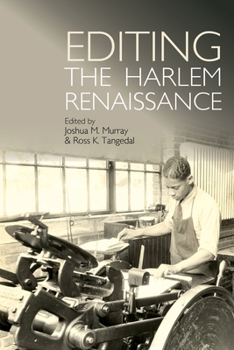Editing the Harlem Renaissance
Select Format
Select Condition 
Book Overview
In his introduction to the foundational 1925 text The New Negro, Alain Locke described the Old Negro as a creature of moral debate and historical controversy, necessitating a metamorphosis into a literary art that embraced modernism and left sentimentalism behind. This was the underlying
theoretical background that contributed to the flowering of African American culture and art that would come to be called the Harlem Renaissance. While the popular...
Format:Hardcover
Language:English
ISBN:1949979555
ISBN13:9781949979558
Release Date:May 2021
Publisher:Clemson University Press W/ Lup
Length:312 Pages
Weight:1.40 lbs.
Dimensions:1.0" x 6.0" x 9.0"
Customer Reviews
0 rating





